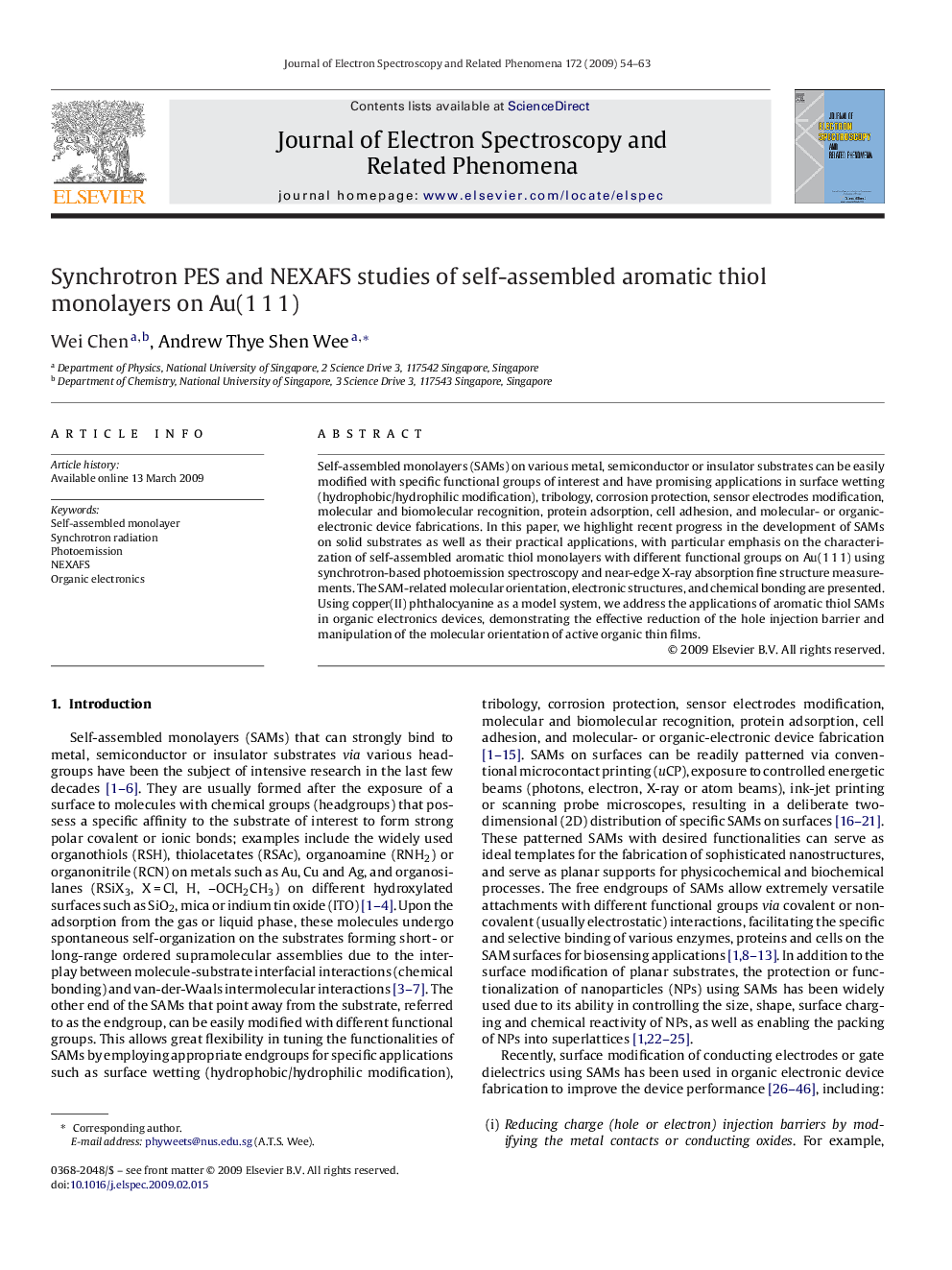| Article ID | Journal | Published Year | Pages | File Type |
|---|---|---|---|---|
| 5396743 | Journal of Electron Spectroscopy and Related Phenomena | 2009 | 10 Pages |
Abstract
Self-assembled monolayers (SAMs) on various metal, semiconductor or insulator substrates can be easily modified with specific functional groups of interest and have promising applications in surface wetting (hydrophobic/hydrophilic modification), tribology, corrosion protection, sensor electrodes modification, molecular and biomolecular recognition, protein adsorption, cell adhesion, and molecular- or organic-electronic device fabrications. In this paper, we highlight recent progress in the development of SAMs on solid substrates as well as their practical applications, with particular emphasis on the characterization of self-assembled aromatic thiol monolayers with different functional groups on Au(1Â 1Â 1) using synchrotron-based photoemission spectroscopy and near-edge X-ray absorption fine structure measurements. The SAM-related molecular orientation, electronic structures, and chemical bonding are presented. Using copper(II) phthalocyanine as a model system, we address the applications of aromatic thiol SAMs in organic electronics devices, demonstrating the effective reduction of the hole injection barrier and manipulation of the molecular orientation of active organic thin films.
Related Topics
Physical Sciences and Engineering
Chemistry
Physical and Theoretical Chemistry
Authors
Wei Chen, Andrew Thye Shen Wee,
